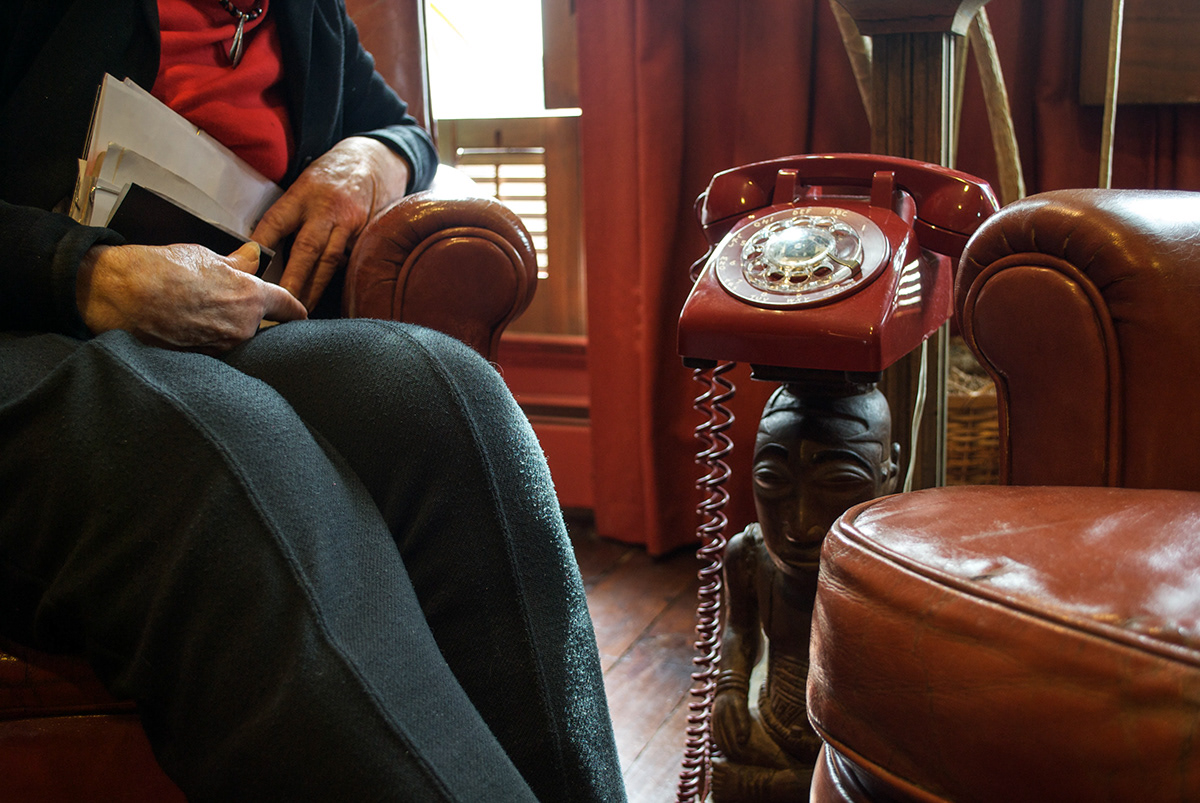



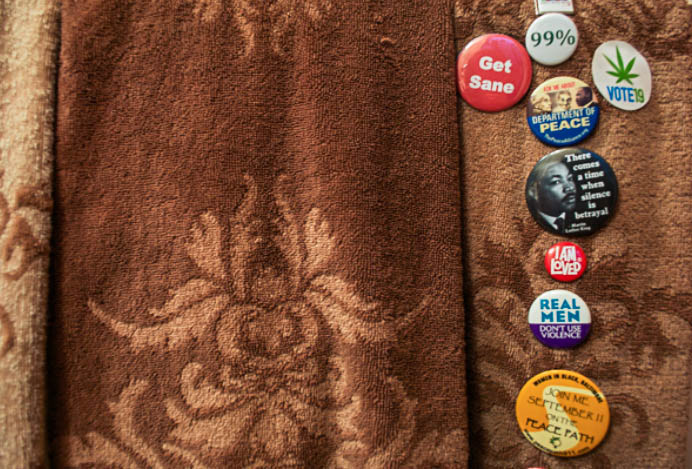
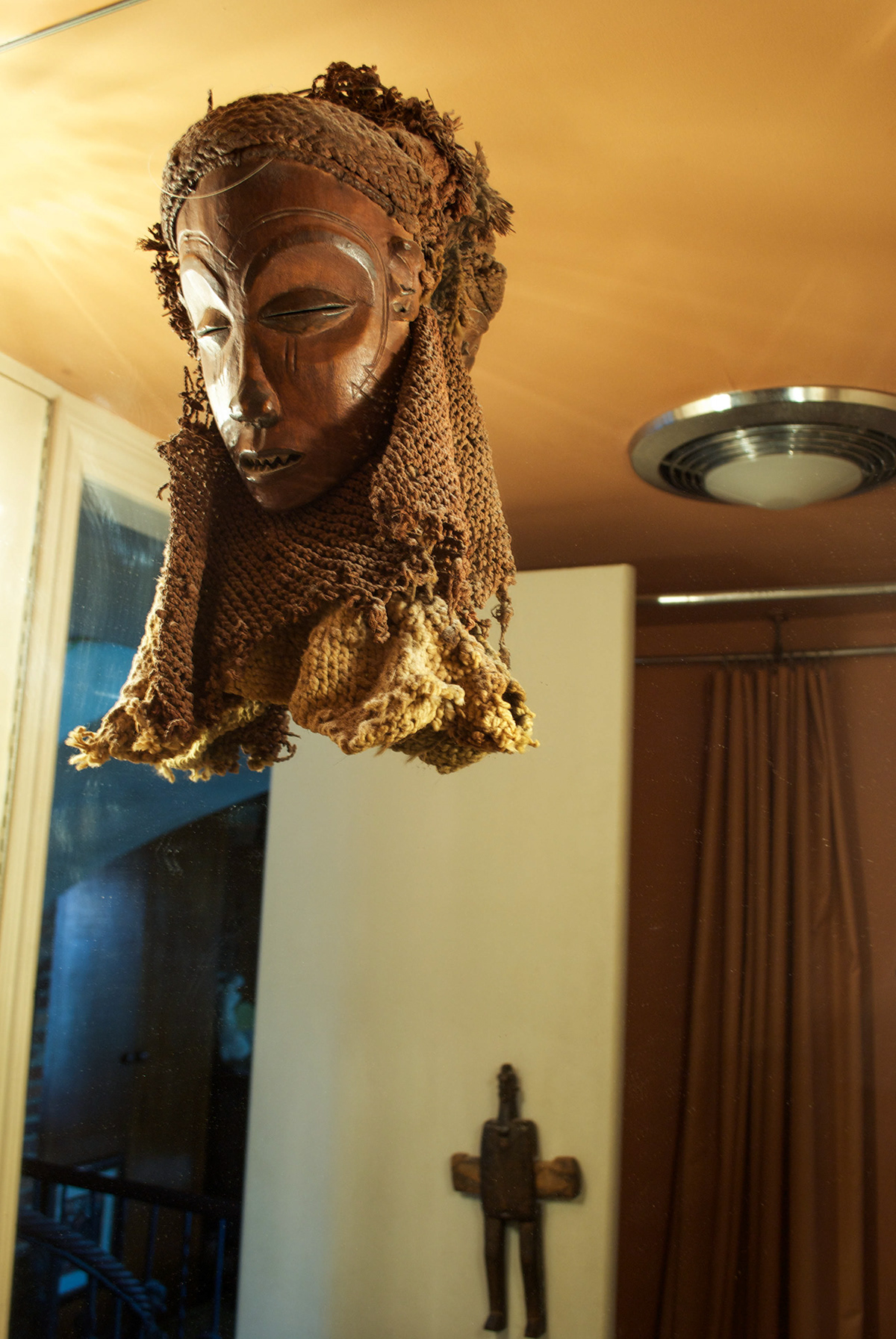
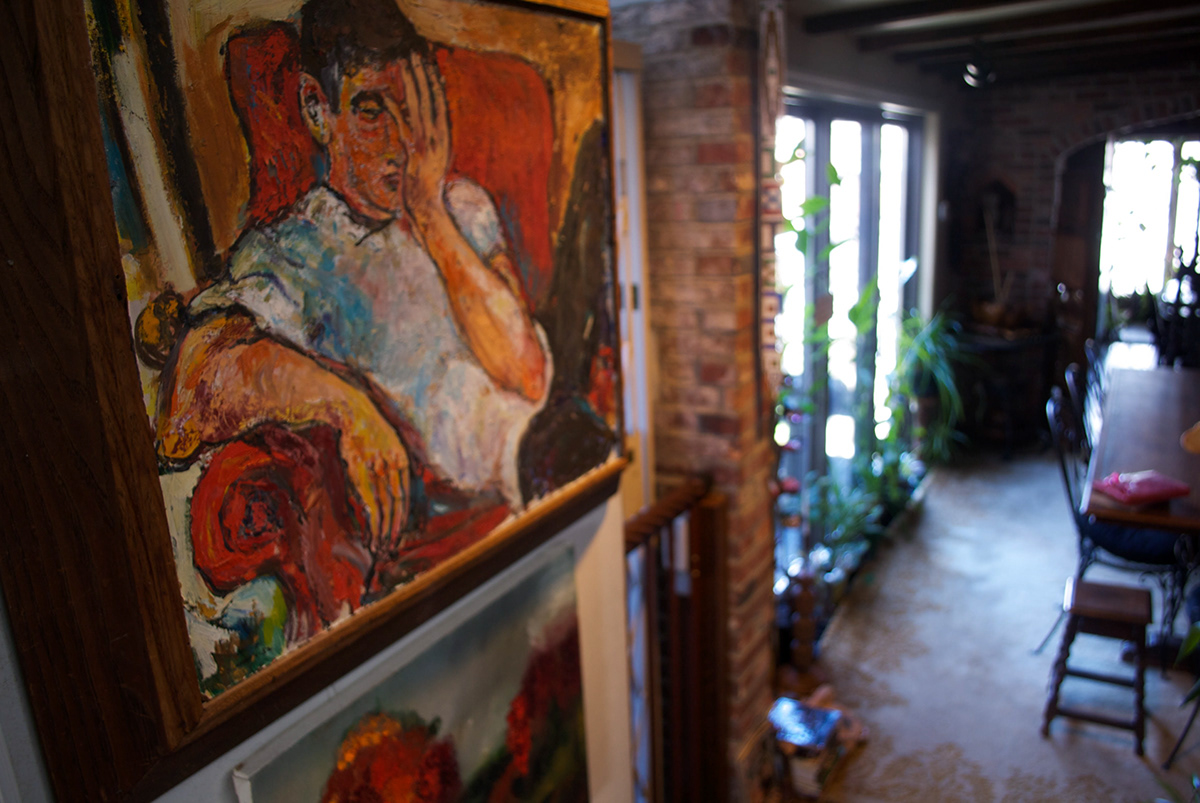
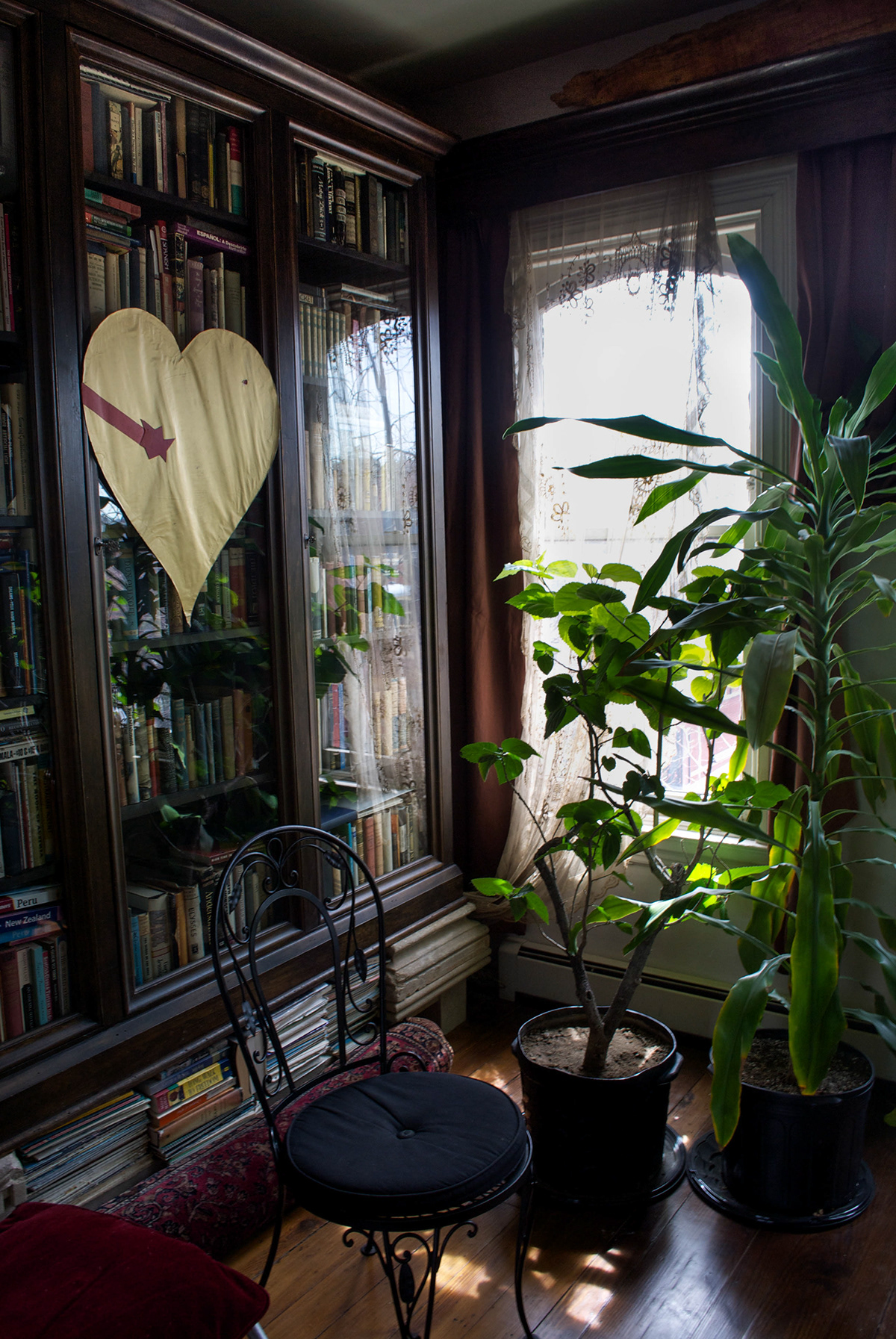
The Purpose of Home:
An Exploration of How One Woman’s Home Reflects the World
Lindsey Mack
It’s New Years Eve, and another one of the homeless has stumbled through the doorway just as the party is beginning. Lane Berk explains how her formally invited guests are among the elite: established artists, historians, scientists and humanitarians, who at first hesitate towards the unexpected company’s foul-smelling and ragged appearance, but Mrs. Berk welcomes her new guests. Before she lets anyone access the banquet of food and beverage, she gives an assignment to all of her guests. “Explore the boundaries of this house and the objects it is host to, and then imagine that you smell smoke.”
There is a fire.
She says, “You must find and select just one art object that you would save from the fire.” An object that they would willingly risk their immediate safety for in order to deliver it from damage. This task could prove quite difficult seeing that the interior of Lane Berk’s house is filled with works of art from various cultures. “Once you have chosen the work that you will save, please explain to everyone the reason for your choice.”
The reason they would risk their life, to save that object.
After listening through everyone’s forged personal connections to the works of art in Berk’s house, the homeless guests shared the reasoning behind the choices they made. It was the type of rationalizing that they make on a daily basis, since they are people who cannot physically have more than what they need. They are very much accustomed to having to make these types of hard decisions. Decisions that could ultimately decide between life or death for them. This is a common activity that Lane Berk facilitates, for the reason that she does not consider the objects in her house to be merely things but instead souls, and she wants to learn of the ways her guests interact with them.
From the outside Lane Burke’s Federal Hill town home does not immediately grab attention, but beyond the brick and mortar lies what she has transformed into a nurturing habitat for art, ideas, and cultures that hail from various places of the world. Upon entering the house, there is a long table that displays an assortment of flyers, stickers and postcards that are for art productions, charities, organizations and movements that she finds important. In the corner of the living room, there sits a grand piano whose proper display was cause for the neighboring wall to be knocked out and re-fitted to the curving contour of the piano. Her home is at service to the art that it accommodates and the community that it exists in. Both of its content and utilization embody her reverence and fascination of cultures, on both a local and global scale.
Lane Berk recalls purchasing the Federal Hill residence back in the 1940’s. She says how the property was fairly inexpensive because of its location among the slums, but that was one of its appealing traits to her. “You didn’t have to be Jesus to walk on water, you could just go outside and walk in the sludge permeating in the streets.” Lane’s attraction to living in what people characterized as a “sess pool” was the opportunity to buy and sell homes to minorities in an attempt to desegregate the neighborhood. She claims that her initial efforts were not successful but did trigger the momentum for future endeavors in the community. This motivation to improve the cultural equality and value of the neighborhood extended into her line of work in the Peace Corps. One major idea that she adopted from learning from the natives in sub-Saharan Africa is that they do not regard ‘art’ as the Western perspective does. The objects they create are teaching instruments, and like several other cultures they do not even have a word for ‘art’ in their language.
The belief that propels her instinct to learn about other cultures is this:
“One race: human race. One family: family of man.
This may be my house, but it is our home.”
She extends that to understand another being, is to ‘stand under’ their life.
Take a walk in their shoes.
Subject yourself to their burdens.
Mrs. Berk has only bought one piece of furniture in her entire life, and all of the rest has been given to her from family, friends and all others with whom she has a mutually supportive connection with. She says, “Too many people are furniture for other people,” in which she implies that people rely on others without providing them that same, or any support. This support is what she looks to provide to artists that inspire her inquisition. Like the furniture in her house, she did not purchase any of it except one piece. However, unlike the furniture in her house, the art serves a far greater purpose than decoration. She does not own a TV for the fact that she is surrounded by art which serves as meaningful engagement for her; objects that she is able to have a different perspective and conversation with each time she approaches them. She does not identify as art collector, as she mentioned how “works of art are souls, and it is impossible to collect souls.” She explains how a great deal of the work in her house she is hosting until a suitable place for them in the culture of which they originated is found.
From that New Years party Lane Berk had hosted, she explains one of the reasons of why a homeless man chose the work of art that he would risk his life for. The painting portrays a man sitting alone outside with an umbrella.
“He said how the piece asked him questions, and forced him to answer them. It forced an honesty out of him, which was hard because he is not very proud. He didn’t know if he would want the piece for his home, but if so, he didn’t have a home to keep it in. He admired it for having a home.”
Lane Berk believes in the power of art to be far more monstrous than what we can fathom. Art’s purpose is for cause; to educate, communicate and elevate our understanding of each other all as people of this world. Her house serves the purpose of our home.
